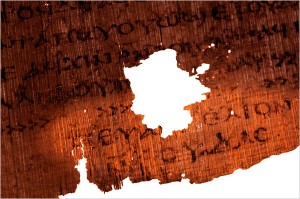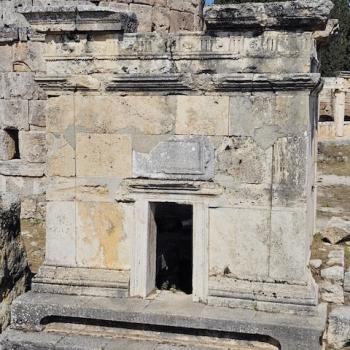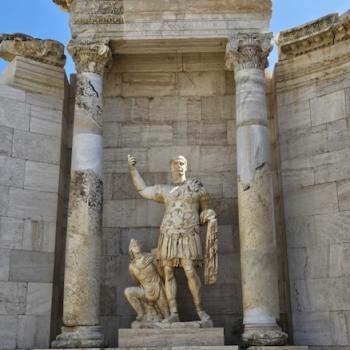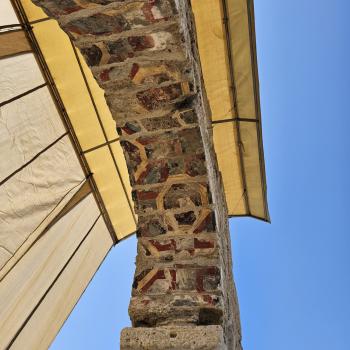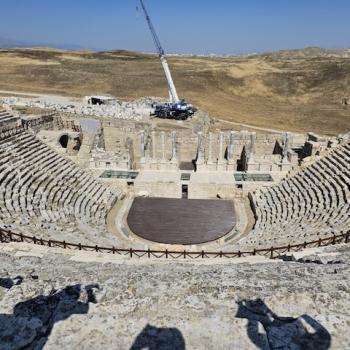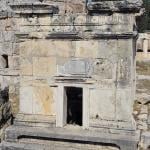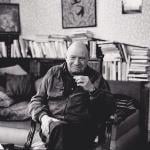(Here’s another helpful piece by my friend and colleague Larry Hurtado)
Bousset and “Early High Christology”
by larry hurtado
I’m teaching a segment of our masters core course this semester, my bit focusing on the emergence of “Jesus-devotion” in earliest Christianity, and in discussions with the class and with others over recent years, Wilhelm Bousset’s classic work, Kyrios Christos (ET, Nashville: Abingdon, 1970; German 1913, 1921) naturally comes up. (2013 will mark the centenary of the original edition of this work, and might make a good occasion for fuller analysis than I can give here.)
One of the clarifying/correcting points I’ve repeatedly made in recent years about Bousset’s work is that he actually supported a very early and explosively quick emergence of the worship of Jesus (in his terms, the “Kyrios-cult”). The crucial evidence he correctly cited is that the letters of Paul show that he took for granted the treatment of the risen Jesus as rightful co-recipient of Christian worship. Paul doesn’t spend any time explaining or advocating Jesus-devotion; he presumes that his readers already practice it.
So, as Bousset further judged, this level of Jesus-devotion must have characterized the form of early Christian circles into which Paul was introduced after what he described as a divine revelation that re-oriented him dramatically from opponent to adherent and proponent of Jesus and early Christian faith. In chronological terms, this means that this “Kyrios-cult” must have “erupted” (Bousset’s term) within the very first months or few years at most, for Paul’s “conversion” is by wide agreement dated within 1-3 years after Jesus’ execution.
Although Bousset stoutly insisted that this level of Jesus-devotion was not practiced in the “Primitive Palestinian Community” (e.g., the Jerusalem church), he fully granted that it erupted early and suddenly, and rightly observed that Paul was by no means the inventor of it. So, in contrast to some other scholars (e.g., my ocassional sparring partners Professor Dunn and Professor Casey), Bousset was a proponent of an “early high christology” view.
In an article published over 30 years ago, I laid out several major problems in Bousset’s work: Larry W. Hurtado, “New Testament Christology: A Critique of Bousset’s Influence,” Theological Studies 40 (1979): 306-17. I contended (and maintain) that these problems required a full and fresh attempt to address the history-of-religions questions about Jesus-devotion. In my 2003 book, Lord Jesus Christ: Devotion to Jesus in Earliest Christianity (Eerdmans), I have offered my own attempt to do so.
On the issue in focus here, I think he erred in distinguishing so sharply in this matter between his “Primitive Palestinian Community” and his “Gentile Christian Primitive Community” (for reasons, see my article and other publications). Especially in Lord Jesus Christ, I’ve given reasons for judging that the Jesus-devotion reflected in Paul’s letters was likely shared by Jewish believers in Roman Palestine as well as Paul’s converts in various cities.
But, though Bousset is now subject to valid criticism on a number of crucial matters, he can’t be rightly portrayed as aligned with those who allege an incremental growth toward the worship of Jesus across several decades or more. On at least the question of whether this “high” level of Jesus-devotion arose early and suddenly or late and incrementally, Bousset was emphatically of the view that it appeared early and with explosively quickly.


